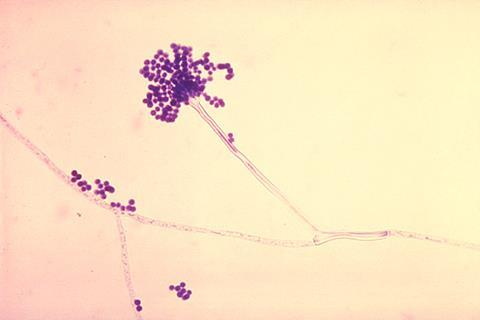Drugs targeting iron uptake mechanisms could prove vital in the fight against human fungal pathogens, a new review suggests.

The paper by researchers at Sant Joan de Déu Research Institute in Catalonia in collaboration with other international institutions, ‘Regulatory and pathogenic mechanisms in response to iron deficiency and excess in fungi’, has been published by Microbial Biotechnology, an Applied Microbiology International publication.
The review delves into the vital role of iron in our lives, say the corresponding authors Dr. Jordi Pijuan, Dr. David Moreno and Dr. Galal Yahya, adding that iron’s importance is underscored by its involvement in numerous essential biological processes and it is indispensable for functions like energy production, oxygen transport, and DNA synthesis.
Double-edged sword
“This versatile element can be a double-edged sword - while a certain amount of iron is necessary for our well-being, an excess can lead to inflammation and chronic conditions caused by the production of excessive reactive oxygen species (ROS), resulting in damage to DNA, lipids, and proteins,” Dr. Pijuan said.
“However, a deficiency in iron can result in anemia and weakened immune function. Astonishingly, over two billion people worldwide are affected by iron deficiency, making it one of the most common nutritional disorders. To tackle this, all living organisms have developed sophisticated mechanisms to control their internal iron levels, ensuring the right amount for survival.”
The yeast Saccharomyces cerevisiae has been a key player in helping scientists understand the intricacies of iron regulation, Dr. Pijuan said.
Human fungal pathogens
“Additionally, studies on human fungal pathogens like Aspergillus fumigatus, Cryptococcus neoformans, and Candida albicans (the top three fungal pathogens in humans and a serious life threat to immunocompromised patients) have revealed how iron becomes a central player during microbial infections,” Dr. Moreno said.
“Mechanisms controlling iron metabolism in these pathogens have significant implications for human health; moreover, targeting pathogen-specific provides hope for developing novel antifungal treatments, which are desperately needed, considering the current scarcity of safe and effective options for patients battling fungal infections.”
Current antifungal treatments are limited in effectiveness and can be toxic to the host, with some fungal strains becoming resistant, but to address this challenge, researchers are developing new drugs and repurposing existing ones targeting fungal iron uptake mechanisms.
Antifungal potential
“For example, statins, used to lower cholesterol, have shown antifungal potential when combined with existing antifungal drugs. Additionally, compounds like artemisinin and pyrvinium pamoate have been identified as promising candidates, improving effectiveness when used in combination with already existing antifungals in research models,” Dr Yahya said.
“In conclusion, iron metabolism is influencing our health and the survival of pathogens; understanding iron regulation in model organisms and fungal human pathogens is a critical step in the quest for better treatments and improved health.”
‘Regulatory and pathogenic mechanisms in response to iron deficiency and excess in fungi’, appears in Microbial Biotechnology, an Applied Microbiology International publication.







No comments yet